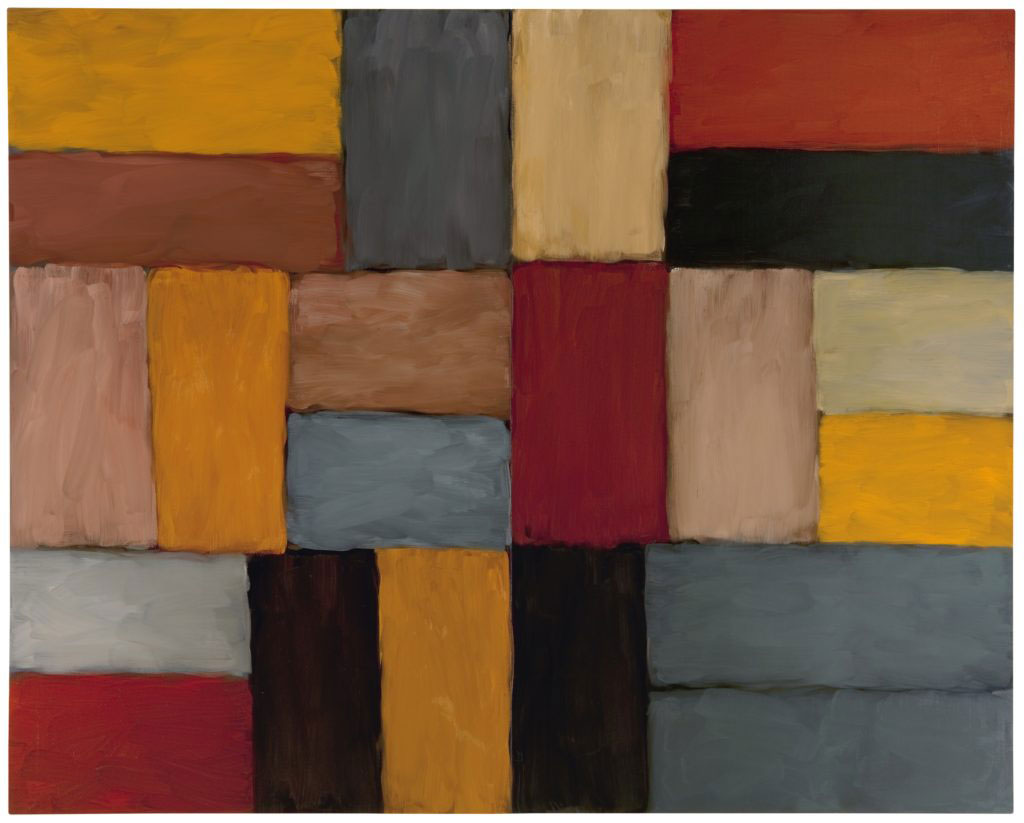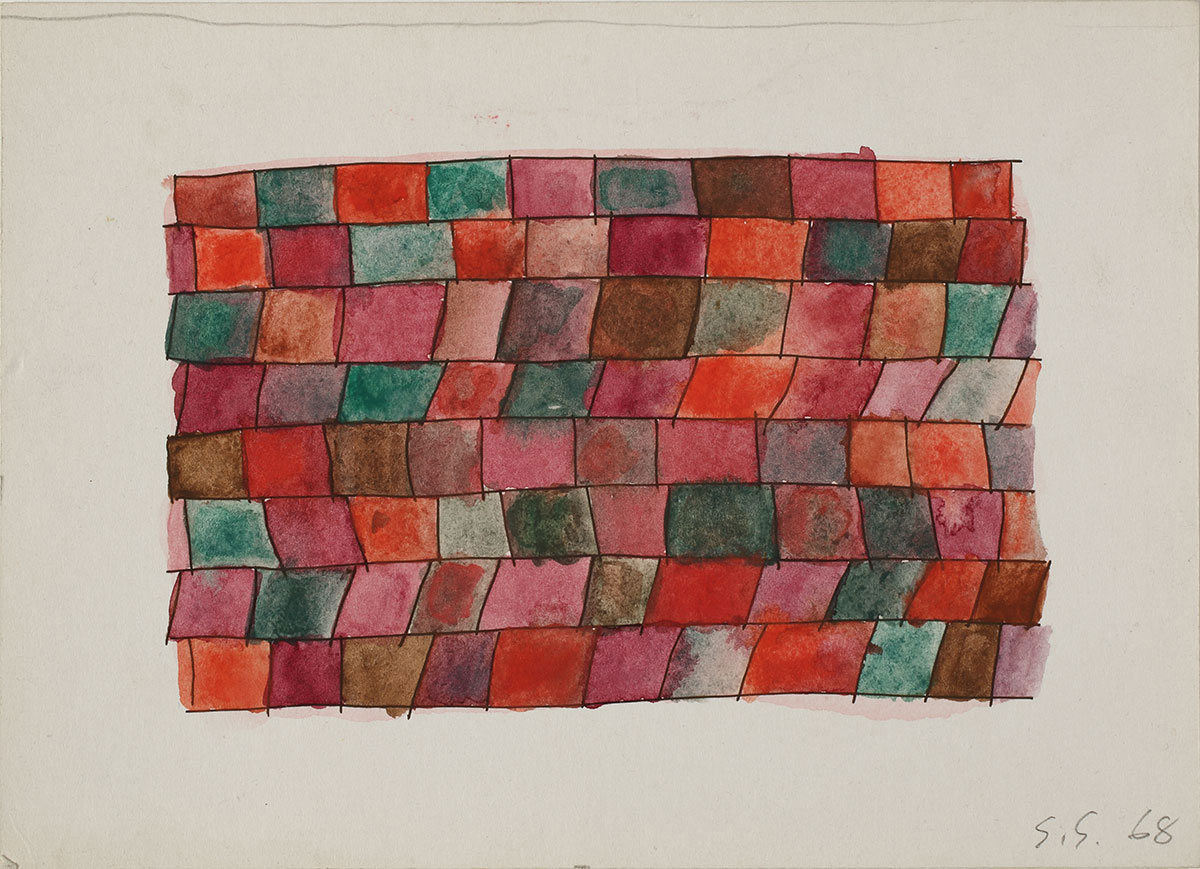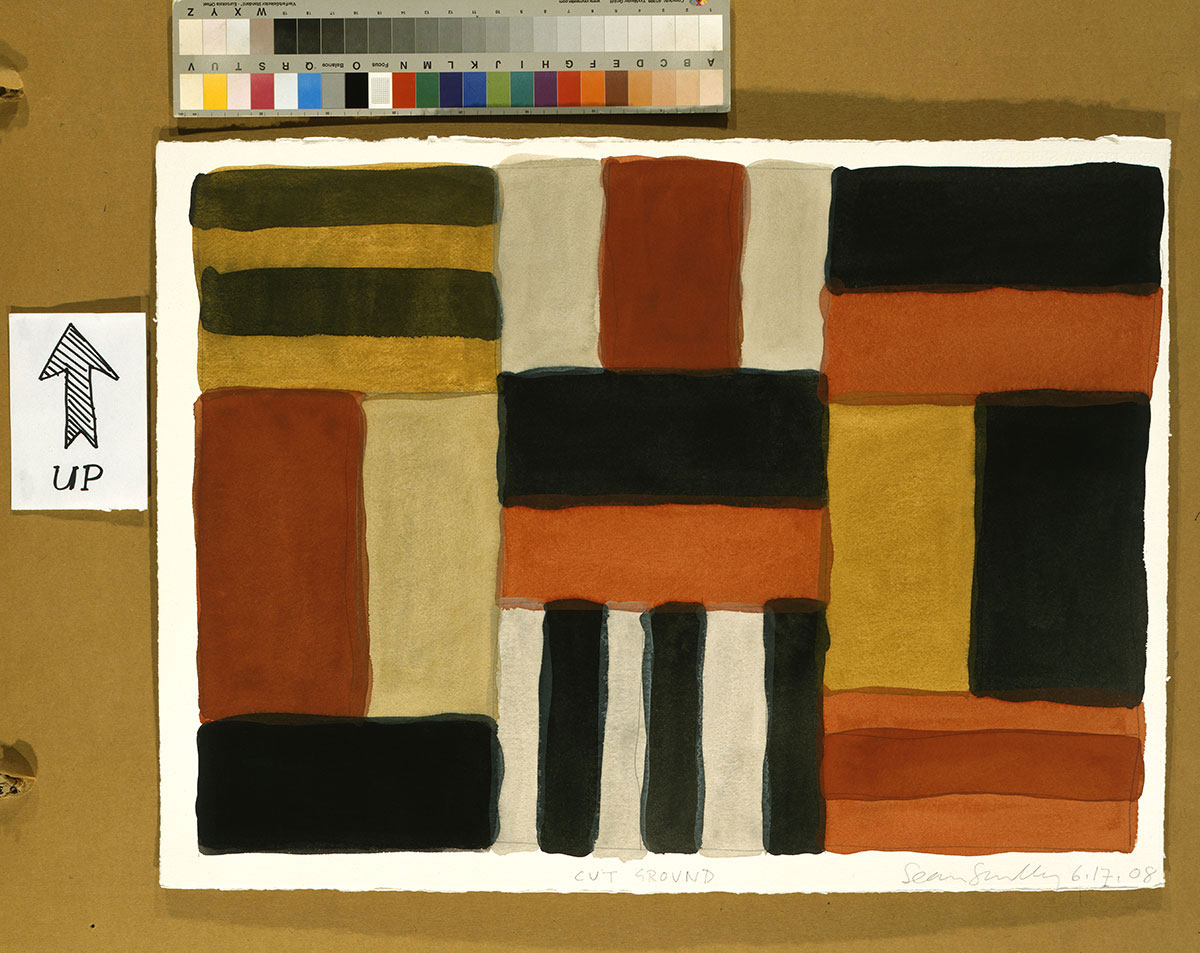PRESENTATION: Sean Scully-The Passenger, A Retrospective
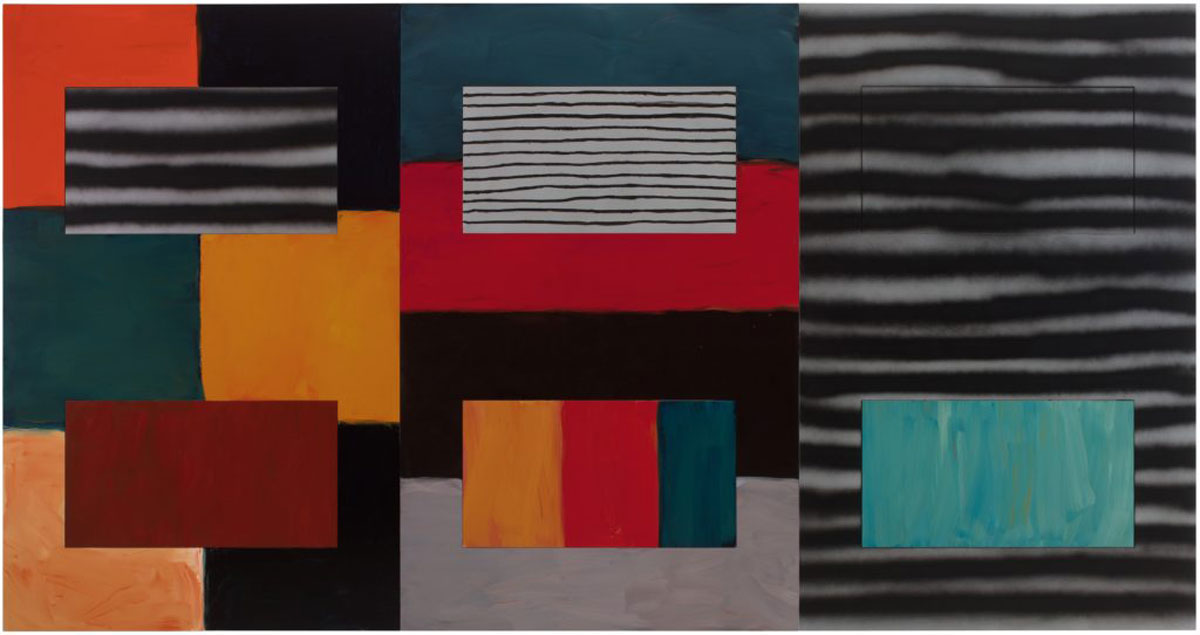 Over the course of his 50-year career, Sean Scully has created an influential body of work that has marked the development of contemporary abstraction. Fusing the traditions of European painting with the distinct character of American abstraction, his work combines painterly drama with great visual delicacy. Often structured around stripes or layered blocks of color arranged on horizontal and vertical axes, the layers in his paintings attain a fine balance between calm reflection and an intrinsic vitality.
Over the course of his 50-year career, Sean Scully has created an influential body of work that has marked the development of contemporary abstraction. Fusing the traditions of European painting with the distinct character of American abstraction, his work combines painterly drama with great visual delicacy. Often structured around stripes or layered blocks of color arranged on horizontal and vertical axes, the layers in his paintings attain a fine balance between calm reflection and an intrinsic vitality.
By Dimitris Lempesis
Photo: Museum of Contemporary Art Zagreb Archive
Sean Scully’s traveling exhibition “The Passenger – A Retrospective” is on view at the Museum of Contemporary Art Zagreb. The exhibition is the final stop on the series of exhibitions, that began with the Museum of Fine Arts – Hungarian National Gallery in Budapest, the Benaki Museum in Athens and MAMbo in Bologna – the Zagreb version of the retrospective is primarily a recapitulation adapted to the spatial specificities of MSU, but also, to a large extent, to the dialogue with its own heritage. The exhibition opens with the “Passenger” as its title section which, in its nomadic features, combines the utopia of the universal language of with the life experience of the artist, himself an emigrant. His intimate statement and personal history, abstracted into the visual language and its signs, construct the exhibition as an authentic testimony to an artistic journey that retains traces of doubts, uncertainties and disappointed hopes in the world of art and its complex unwritten rules and never-published laws. In the exhibition halls, Scully’s works, ranging from intimate drawings and pastels to early figural experiments and further to sculptural painting surfaces, are meant to become, as the artist would say, “hard won insistent surface”. Starting with the early figurative experiments of the 1960s and the minimalist works from the 1970s, the exhibition at the Museum of Fine Arts – Hungarian National Gallery encompasses every major period of Scully’s career: works from the 1980s, based on expressive bands of color and giving off a sculptural feel (Adoration, 1982); groups of works associated with window and wall motifs (Window Figure, 2002); his unique landscape interpretations (Landline series, Wall of Light series); and his recent – and to many people surprising – turn towards figuration (Madonna series). Without following a strict chronological order, the exhibition displays the most important groups of works in thematic units, showing how Scully ‘opened up’ abstraction to objective references and metaphorical content. One of the most outstanding artworks is a new painting entitled “Black Square” (2020), which harkens back to the “pure feeling” painted by Kazimir Malevich in his iconic work of the same title. In Scully’s artwork, exhibited to the public for the very first time, Malevich’s motif is wedged into the incandescence of a “romantic landscape” like a black hole, an objectified manifestation of the virtually palpable Nothingness and a metaphor of the contemporary situation, fraught with existential angst. The exhibition features around 110 works by Scully, from monumental paintings to works on paper, as well as a sculpture and a photographic work. Among them are:
“Araby” (1981): During Scully’s trip to Morocco in 1969, he was deeply influenced by the repetitive structures on the striped textiles he saw there, by the music and rhythm in the ornamental bands and stripes that decorated their surfaces. Besides the presence of visual elements and musical motifs borrowed from non-European cultures, another constant feature of Scully’s art, even nowadays, is his use of literary references, especially to authors such as Samuel Beckett and James Joyce. The musical rhythm in the stripes of the Moroccan textiles resonates in “Araby”, although the motif can be traced to a short story of the same title by James Joyce. In the story, a boy from Dublin dreams about an enigmatic “Arabian” bazaar, from where he promised to obtain a gift for his lover. Scully produced this painting in 1981, the year when he radically re-evaluated his own geometric art: casting doubt on the purity of abstraction, he brought figural associations and cultural historical references back into his painting. “Midnight Mirror” (2008): During his career, Scully has evolved his own iconography, which is built from a reduced set of forms. Besides the wall, the window, the figure and the ground, another of his most defining motifs is the mirror. The motif of the mirror and reflection can be traced to such key works in the artist’s career as “Narcissus” (1984), which recalls the legend from mythology. Scully later created the visual equivalent of reflection, in the form of diptych that juxtaposes “shifting” systems of bands of varying thicknesses. The significance of division, of the “Vita duplex”, was emphasized by the artist himself when he quoted W. B. Yeats: “No mind can engender till divided into two”. The mirror-structures Scully created are dialectic figures, which refer to mimesis as an abstract structure; they often also express human relations, besides alluding to visual memories and specific times of day, as suggested by the title of Midnight Mirror. “Figure Abstract and Vice Versa” (2019): Among Scully’s most recent figural works, the painting is crucially important. The work is a diptych, so it could be looked upon as a modified variation on his “Mirror” paintings. This composition is also built on associations of mismatching elements. Scully has arranged two panels side by side: an (abstract) landline and a (representational) human figure set against a ground. The surfaces of both picture fields are interrupted by insets at two points each. Above, the insets continue their respective grounds on both sides, but below they are swapped over, resulting in a unique chiasm. The fabric of the picture seems to have been split open to reveal another level of reality: looking through the windows, one can see the landline behind the human, and the human behind the landline. The two reflectionally symmetrical fields reinterpret one another. The panel on the left can be read as a radiant seaside landscape, while the figural field seems to be zooming into this abstract landscape. The artist’s son, Oisín, is playing amongst almost abstractly pure color fields of blue and yellow, similar to the blue and yellow fields in the landline on the left. Here Scully is not abstracting an existing figurative structure, but concretizing his own abstract system of forms – or more precisely, he is creating a dialectic structure that can also be interpreted as a synthesis of abstraction and figuration.
Photo: Sean Scully, What Makes Us Too, 2017, oil, acrylic, and oil pastel on aluminium; 299.7 × 571.5 cm, private collection, © Sean Scully. Image courtesy of the artist. Photo by Robert Bean
Info: Curators: Dávid Fehér, Jasna Jakšić, Ivana Kancir and Ana Škegro, The Museum of Contemporary Art Zagreb, Avenija Dubrovnik 17, Zagreb, Croatia, Duration: 16/11/2022-12/3/2023, Days & Hours: Tue-Fri 11:00-19:00, Sat-Sun 11:00-18:00, www.msu.hr/



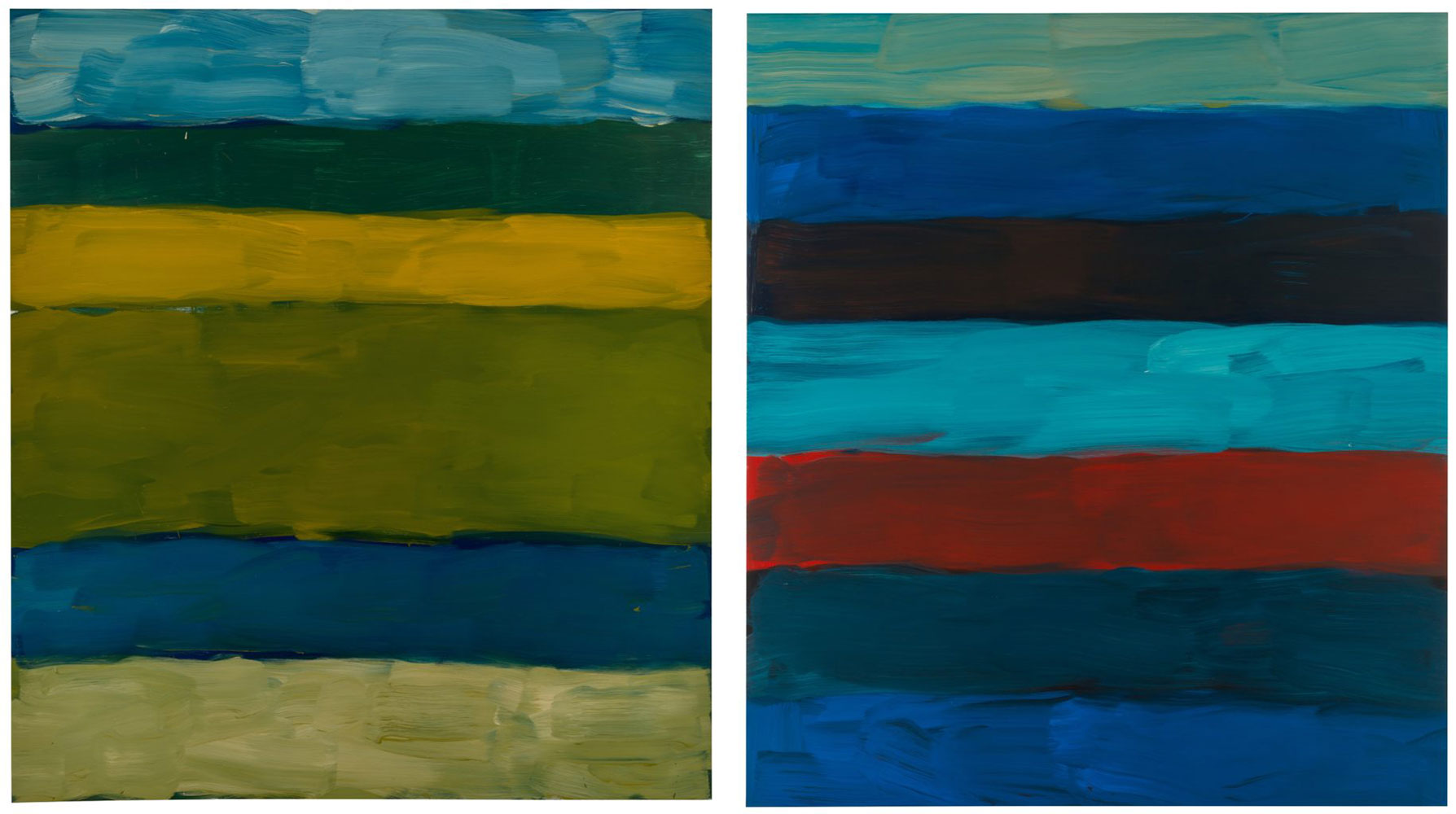
Right: Sean Scully, Oisín Sea Green, 2016, oil on aluminium; 216 × 190.5 cm, private collection © Sean Scully. Image courtesy of the artist. Photo by Christoph Knoch
